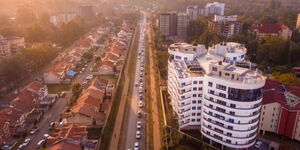Nakuru Residents on Friday, March 5, encountered a rare sight when a swarm of locusts invaded the town.
The insects estimated to be numbering in their hundreds of thousands took over the sky forming a dark cloud over the town.
In a video seen by Kenyans.co.ke, residents were surprised by the incident which had not been witnessed in the town before.
Watch the video below:
{"preview_thumbnail":"/files/styles/video_embed_wysiwyg_preview/public/video_thumbnails/CzRaJQ67kh4.jpg?itok=_KCZD1N5","video_url":"","settings":{"responsive":1,"width":"854","height":"480","autoplay":0},"settings_summary":["Embedded Video (Responsive)."]}
The locusts have been a menace in the country since 2019, invading farmlands by destroying crops, but they have not invaded cities and major towns.
By December 2020, the locusts had spread to more than 15 counties in the country.
The Food and Agriculture Organisation (FAO), stated that the rains that fell during the last week of February allowed swarms to mature rapidly in northern Kenya and southern Ethiopia and lay eggs that could hatch in late March, causing small hopper bands to form.
"However, breeding this spring is likely to be limited as control operations continue to reduce current infestations and well below-normal rains are forecasted," the agency stated.
It noted that the swarms that are currently present in northern and central areas are smaller and fewer compared to a year ago.
But locusts are highly mobile and can be sighted several times. Some were spotted in parts of the Rift Valley region, the country’s breadbasket.
A Kenyan start-up is harvesting the insects for food revealing that the locusts are first harvested, crushed, dried, and then milled into powder which is then turned into protein animal food.
Albert Lemasulani, the field coordinator at The Bug Picture, revealed that the locusts are harvested at night since harvesting them during the day when they are active is impossible.
The start-up harvested 1.3 tonnes of locusts between February 1 and February 18. It targets swarms of five or fewer hectares especially in the habited areas that is not suitable for spraying.












